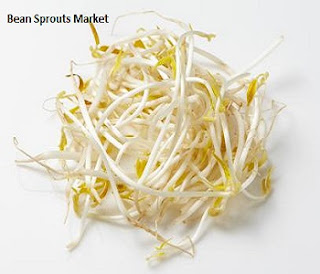The global and Chinese bean sprout market is anticipating to grow at a significant pace owing to high rate of consumption specifically in the Asian cuisine, which is made from sprouting beans. These bean sprouts are made from greenish capped mung beans. Commonly various types of bean sprouts are found which are larger grained soy sprouts and yellow. The market is expected to witness sizeable growth owing to the high nutrition content and requires less cooking time thereby leading to less consumption of fuel. It mostly takes less than 5 days to fully grown. These bean sprout facilitates easy cooking can be essentially microwaved or even stir fired. Bean sprout is extensively used as an ingredient in various types of food such as spring rolls before heat application. The Chinese market is anticipated to experience high growth owing to the applicability in various dishes. The Chinese cuisine dishes significantly uses bean sprouts in dishes such as egg drop soup, fried rice, hot and sour soup. Also it is staple ingredient for namul and used Vietnamese cuisine.
Browse Detail TOC of
Bean Sprouts Market at : https://www.millioninsights.com/industry-reports/global-and-china-bean-sprouts-market
The market is expected to
flourish attributing to the rising health concerns across the world. The
industry is witnessing a trend where people are consuming high nutrition diet
in order to maintain fitness. Rising prevalence of chronic diseases is another
substantial factor driving the demand for bean sprouts in the market. Another essential factor escalating the need for
these sprouts is the high scale consumption across all ages with no side
effects. The Japanese cuisine’s moyashi is referred to as mung sprout
along with soy sprouts known as mame moyashi. It is essential ingredient in
various Japanese dishes such as soups and stir fries. Thai cuisine utilizes
sprouts which essentially eaten in stir fried dishes and various types of
soups.
Manufacturers are focusing on providing
bean sprouts, which collates high nutrition benefits. Commercially grown bean
sprouts are associated with various outbreaks related to harmful bacteria such
as salmonella and various toxic forms of Escherichia coli. A major challenge
for the industry is the production of contaminated seeds, which causes harmful
diseases. This may significantly result from the unhygienic production of seeds
with an excessive microbial count. These seeds may become contaminated in the
fields in which they are grown. Sanitization of these seeds may not kill the
bacteria hidden inside. According to FDA, some single bacteria inside a
kilogram of seed can contaminate the whole lot of it.
Various government regulations
and initiatives by agencies such as Health Canada and U.S. Food and Drug
Administration (FDA) have stated guidelines to safely manufacture edible
sprouts and have increased public awareness on safe consumption. These
regulations are issued to minimize the harmful effects of contaminated seeds
and maintenance of public health. Such steps by the government significantly
propel the usage of bean sprouts in turn drives the market for the industry.
Various regulations are stated by the governments to avoid epidemic incidents.
Regulation such as EU No 208/2013 states that the origin of seeds is to be
traceable at every stage of production, distribution and processing. EU No
209/2013 governs the microbiological criteria for sprout production. No
211/2013 is intended for the production of sprouts, which requires a certificate
in accordance to the guidelines stated in the Annex.
Request Sample Copy of
Bean Sprouts Market at : https://www.millioninsights.com/industry-reports/global-and-china-bean-sprouts-market/request-sample
Various publications are released
for safely consuming and growing sprouts at homes. These recommendations
comprise of enhanced practices for production and handling of seeds, microbial
testing and seed disinfection treatments. Phytic acid which is an
antinutritional factor primarily occurs in germ tissue and seed coats of
plants. It forms almost insoluble compounds with various metal ions including
magnesium, calcium and iron reducing dietary.




No comments:
Post a Comment